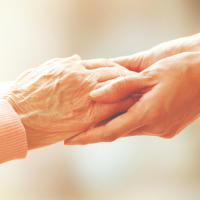Study Links Hospice Care To Reduced Depression Risk In Spouses
It's been widely accepted that patients receive a number of health and spiritual benefits from hospice care. Numerous studies have focused on the individual patient and the effect that hospice care typically has. There's been much less focus on the surviving family members and whether or not hospice care for their loved one has an effect on their well-being. A recent study completed by researchers at the Icahn School of Medicine at Mount Sinai set out to discover how hospice care helped surviving spouses of the patients. What they found is that hospice care often makes a significant, positive impact on the spouses' mental health.
Researchers began by studying data from more than 1-thousand now deceased patients with surviving spouses. The spouses were tracked for up to two years to record their mental and physical health record after bereavement. All individuals included in the study were over the age of 50 and all patients began hospice care due to a serious illness.
The patients analyzed belonged to two groups, one group of hospice care patients, and one group that was never under hospice care.
Spouses of patients who received hospice care showed definitively that they were less likely to experience depression symptoms than spouses of the patients not in hospice care. These results were at their most pronounced one year after a patient's death.
It's unknown if there's a specific service provided under hospice that has this positive affect on surviving family members. The patients in this particular study received services including medical services, symptom management, spiritual counseling, social services and bereavement counseling.
Perhaps the most amazing part of the researchers discovery is that a reduced risk of depression was evident even in spouses of patients who were in hospice care for only three days.
This is a significant study given that the risk of depression is typically at its highest following the loss of a spouse. Being able to show a significantly reduced risk during this time makes this benefit even more pronounced.
Currently, about 45-percent of terminally ill patients are under hospice care when they die, which is marks a 20-percent increase over the past decade.
To learn more about how hospice care benefits the patient and the family, contact us at Cura-HPC of Tulsa.



